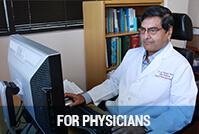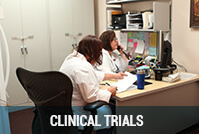Michigan Teen Nearly Killed Due to Drowsy Driving

A Michigan teen was nearly impaled after careening off the road when he temporarily fell asleep while driving. This case should serve as a sobering reminder of how sleep disorders can wreak havoc on people’s lives, and cause incidents of drowsy driving that can result in accidents and deaths.
According to the National Highway Traffic and Safety Administration, drowsy driving causes more than 100,000 crashes a year, resulting in 40,000 injuries and 1,550 deaths. As tragic as these numbers are, they only tell a portion of the story. It is widely recognized that drowsy driving is underreported as a cause of crashes. And this doesn’t include incidents caused by driver inattention.
In response to this near-fatal accident, Dr. Sangal shares “Sleepy driving is dangerous! It is as dangerous as driving while intoxicated. Common preventable causes include not getting enough time in bed, snoring with sleep apnea, certain prescription and over the counter medicines, narcolepsy and idiopathic hypersomnia, and severe insomnia. If you are sleepy while driving, pull over and take a nap. If you are often sleepy while driving, see a sleep medicine specialist. If you value your life and the lives of others, do not drive if you are sleepy.”
A single night of lost sleep produces levels of sleep deprivation that make it dangerous to drive. Even more common is ongoing patterns of sleep problems, like not sleeping long enough or getting a good quality of sleep on a regular basis- these all add up to produce dangerous conditions for driving due to daytime sleepiness. Chronic sleep deprivation, the kind often experienced by people with sleep disorders such as insomnia or obstructive sleep apnea, increases risk for drowsy driving. People with obstructive sleep apnea are at significantly higher risk for driving accidents than the general public, according to research.
The best strategy to avoid drowsy driving is to get plenty of sleep on a regular basis. Take care of your sleep on a daily basis, and talk with your doctor about any problems you’re having with the quantity and quality of your nightly rest- they may refer you to the Sleep & Attention Disorders Institute, or another sleep testing lab, for evaluation. That said, there are other things you can do to improve the safety of your driving, and avoid drowsiness behind the wheel:
- Leave plenty of time to reach your destination. Make sure to build time in your schedule to take breaks to get fresh air, stretch your legs, and break up the monotony of driving that can itself be fatiguing. If need be, break up extended driving trips with overnight stays, to maintain your regular sleep routine.
- Avoid late night and early morning driving. A good rule of thumb is to limit driving to times when you wouldn’t be sleeping.
- Share driving responsibilities. Split driving duties with another driver, and take turns resting when you’re not driving.
- Don’t rely on caffeine as substitute for sleep. Caffeine may provide a short-term boost to alertness, but the other effects of sleep deprivation can continue to interfere with safe driving.
- If you’re sleepy, call a friend to assist with the driving! You’d call somebody if you’d had a little too much to drink. Follow the same good, responsible advice for when you’re tired—even if the drive is a short one.
If you’re consistently sleepy during the day, or find yourself having rough sleep at night, make an appointment for a sleep evaluation at our sleep disorder center today!









